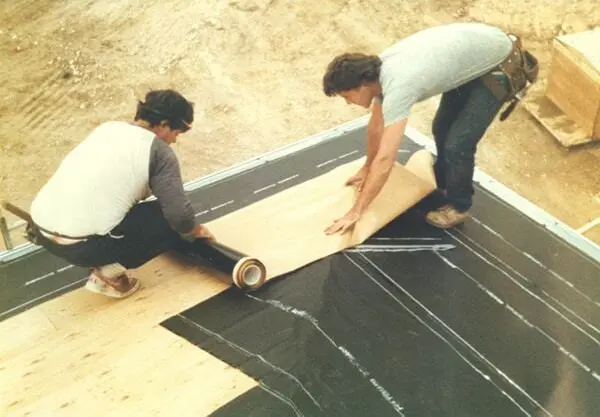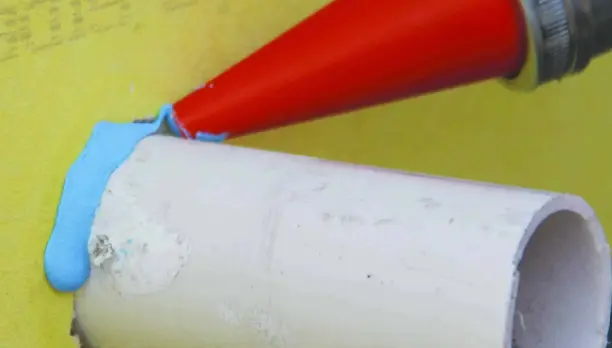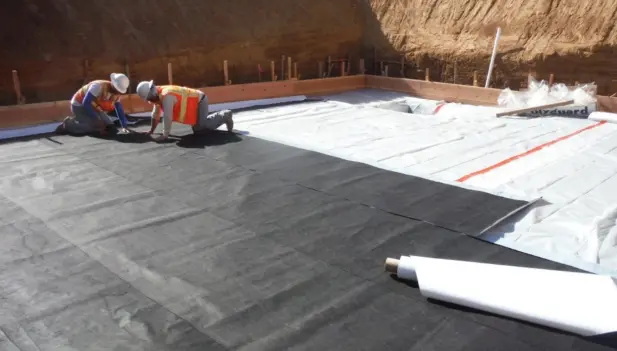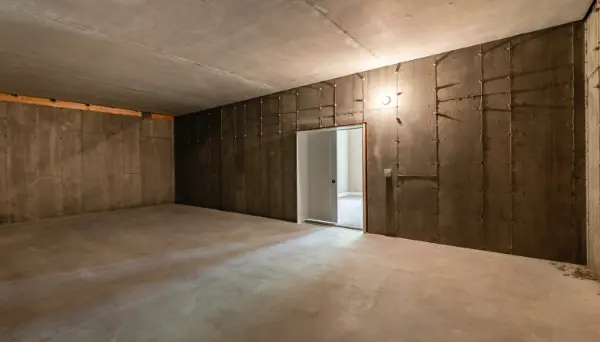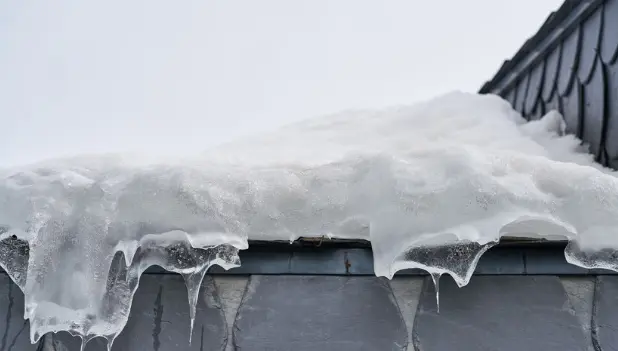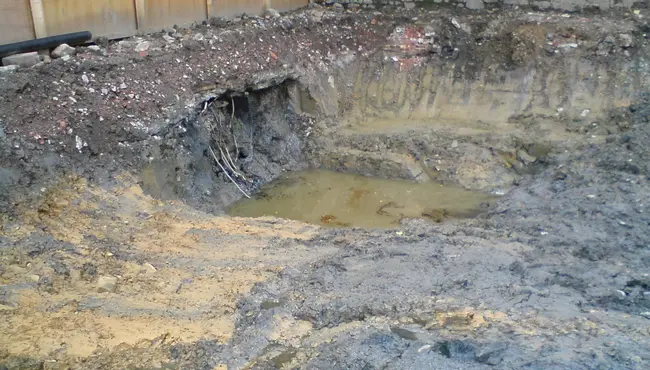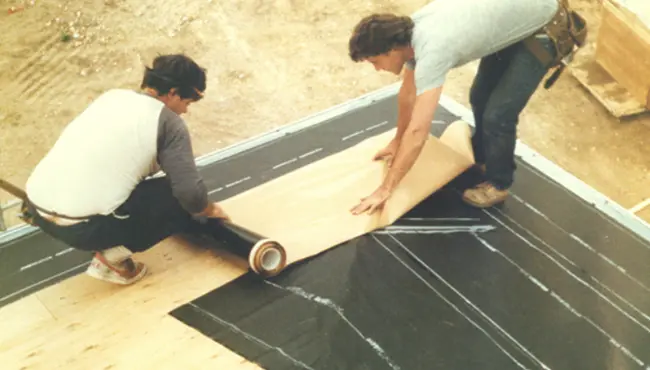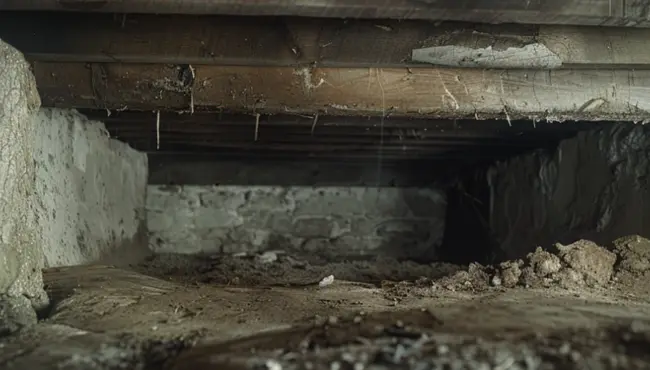Architects often design a steep-slope roof (slopes greater than 4:12) with architectural metal, tile, or slate shingles, giving the house a prominent, dignified appearance. Of concern, roof water leakage from ice dams can plague steep-slope roofs due much to material and design limitations. In addition, changing temperatures will cause architectural tiles to expand and contract, destroying the integrity of standard roofing underlayment.
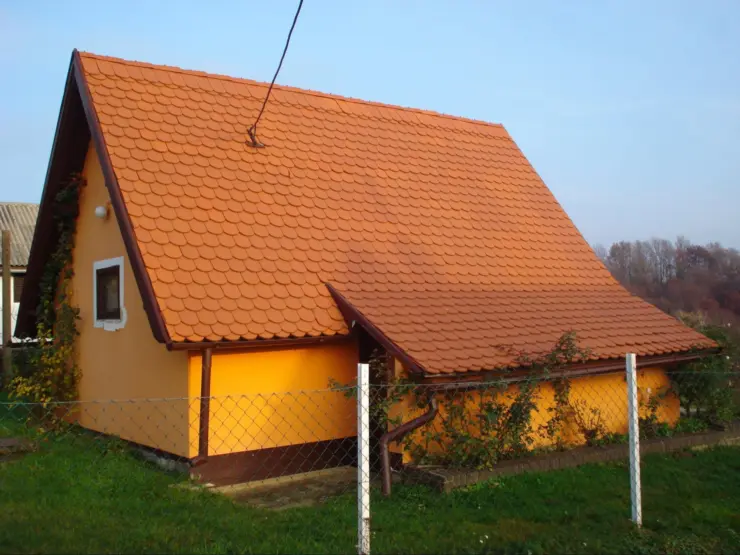
Therefore, a well-designed and correctly installed steep-slope roof system with architectural shingles must include a full-roof application of a quality high-heat steep slope roof underlayment, like Deckguard® HT.
What is an Ice Dam?
Ice dams form when melting snow (from heat flows from the interior to exterior and the sun’s energy) or accumulated rain on roof freezes to ice, typically at eaves. Of concern, ice dams cause ensuing snowmelt and rainwater to collect behind the ice, increasing the size of the ice dam when it freezes (laterally along the eave and eventually upslope).
Roof water leakage, due to hydrostatic pressure, occurs when a pathway opens up in the roofing assembly. Therefore, roof design and construction must stop water leakage due to ice dams.
What are High-Heat Roofing Underlayments?
High-heat producing metal, tile, and slate roofs will expand and contract with shifting temperatures. Therefore they require a high temp roof underlayment instead of a standard underlayment. However, traditional shingles that need superior long-term weather protection can also use high-temperature roof underlayment.
High-temperature roof underlayment mainly serves as a waterproofing layer for architectural metal, tile, or slate roof systems, helping to protect a roof against ice dams and leaks. The underlayment’s design allows it to adhere directly to roof decks or certain insulation panels before applying finished roof coverings, including architectural shingles, metal, or tile.
Building Codes for Roofing Underlayment
Building codes require self-adhering membranes for steep roof underlayment to meet the requirements of ASTM D1970, along with labeling indication compliance with the code. Notably, the ASTM D1970, provides the minimum standards for self-adhering bituminous sheet underlayments for compliance in the 2021 International Residential Code, 2021 International Building Code, and NFPA 5000 Building Construction and Safety Code.
Importantly, always refer to local building codes to confirm eaves protection requirements. For example, regions of high winds or hurricanes, or lower-sloped (2:12 to 4:12) roofs may also require (by local codes) an application of underlayment membrane over the entire roof, not just near the eaves, improving roof protections if water gets under the shingles.
Condensation Issues with High-Heat Roofing Underlayment
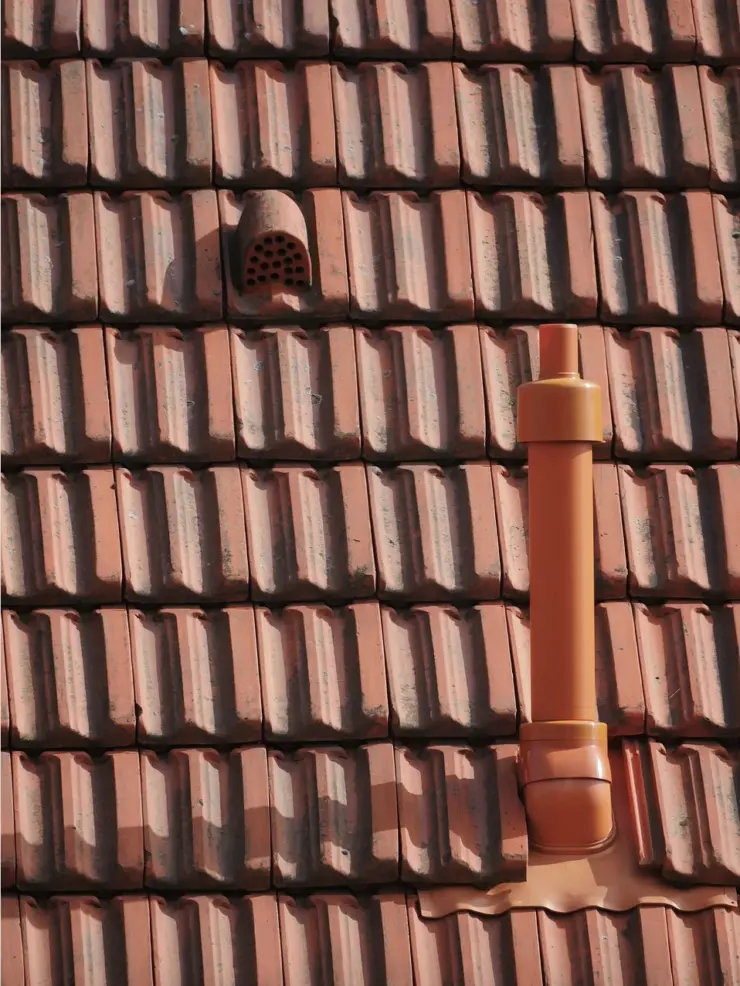
An adequately installed self-adhering membrane restricts the flow of air and vapor through the roof system. However, air infiltrating from the heated living space to the attic can condense on the underside of the membrane and cause several significant problems:
- Condensation can cause the decking to swell, which can result in buckling, wavy shingles, and decking.
- The moisture can rot the roof deck and destroy its nail-holding capability and its ability to carry loads.
- Severe condensation can infiltrate the insulation, lessen its effectiveness and possibly seep through to the below ceiling. Damp insulation causes mold, wood rot, and mildew, which can lead to poor indoor air quality and structural damage.
A best practice for steep-slope roofing systems suggests following these four recommendations for reducing condensation on the underside of a self-adhering underlayment membrane:
- Install adequate, balanced, and evenly distributed attic ventilation.
- Install a quality vapor retarder on the warm side of the attic floor to lessen the infiltration of warm, moist air into the attic.
- Sufficiently install insulation over the entire attic.
- Comply with local energy codes for air barrier and appropriate ceiling insulation R-values.
However, homes in warm, humid climates may require a different approach, which requires the advice of a waterproofing professional, like our experts at Polyguard.
Why Select DECKGUARD® HT Underlayment Membrane for Your Steep Roof?
Deckguard HT resists water infiltration from water backup due to wind-driven rain or ice dams. It also waterproofs leak areas like skylights, protrusions, valleys, and other flashing areas. In addition, Deckguard HT applied according to recommendations and specifications will keep the roof deck and supporting structure dry, to preserve its performance and integrity.

The high-heat Deckguard HT 40-mil membrane composition includes a high strength slip-resistant spider web backing laminated to a high-performance, high heat asphalt compound with a film release for ease of application. It offers several significant beneficial features:
- You can expose the high heat membrane to heat up to 260°F.
- The quick film release adds to its ease of application. Once you remove the liner, it leaves a strong asphalt compound to bond to the roof deck.
- Easy to apply Deckguard HT contains a film release that activates a strong asphalt component that provides superior adhesion to the roof deck.
- Self-sealing Deckguard HT will seal around nails to resist leakage created by water backing up due to wind-driven rains and ice dams.
- Deckguard HT waterproofs high-risk leak areas such as skylights, protrusions, valleys, and other flashing areas.
Builders can use Deckguard® HT waterproofing underlayment membrane on sloped residential and commercial roof decks and under traditional shingles and architectural tile, slate, and metal roofing. However, for Copper, Cor-Ten®, or zinc metal roofing in high altitudes, contact the professionals Polyguard for recommendations.
Why You Need a High-Heat Roofing Underlayment for Steep Roofs
Steep-slope roofs need underlayment to protect against ice dams and wind-driven rain allowing water to infiltrate the roof system. In addition, steep roofs shingles with heat-producing metal, slate, or tile, need a high-heat roofing underlayment, like Deckguard® HT.
Self-sealing, simple to install, Deckguard® HT waterproofing and roofing underlayment, and Polyguard adhesives and sealants, will protect the integrity of your roof from wind-driven rains and ice dams, to limit condensation and structurally damaging and unhealthy mold. Steep-slope homes should include features that reduce condensation on the underside of a self-adhering underlayment membrane, like ventilation, vapor retarder, code-compliant air barrier, and ceiling insulation.
Contact the experts at Polyguard today to find out the best information and products for high-heat roofing underlayment with steep slope roofs.
